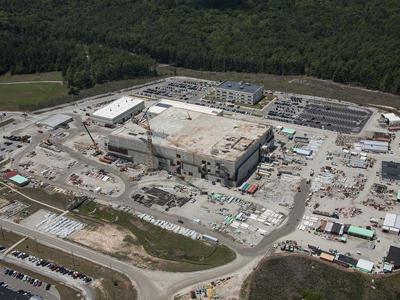The National Nuclear Security Administration and the firms behind the shuttered Mixed Oxide Fuel Fabrication Facility at the Savannah River Site have reached a multimillion-dollar settlement agreement, smoothing over and resolving lingering contract and closeout discrepancies.
The sweeping agreement is valued at $186 million, according to information reviewed by the Aiken Standard. An announcement from the NNSA on Tuesday did not include that figure.
The same information reviewed by the Aiken Standard describes the settlement as "the best value to the American taxpayer," among other things. A bevy of MOX-related lawsuits had been filed with the U.S. Court of Federal Claims since 2015, about three years before the incomplete project was axed.
Legal disputes, according to the afternoon announcement, impeded the federal government's pursuits.
More specifically, the NNSA said the new arrangement enables the semiautonomous agency to better follow through on plutonium pit production – a nuclear weapons mission – and plutonium disposition plans known as dilute-and-dispose.
"Now we can fully focus on our proposal to repurpose MOX for plutonium pit production – a capability the United States needs to maintain a safe, secure and reliable nuclear deterrent," NNSA chief Lisa Gordon-Hagerty said in a prepared statement.
Gordon-Hagerty is also the U.S. Department of Energy's under secretary for nuclear security.
"And while we move forward with plans to repurpose the MOX facility, NNSA remains committed to removing surplus plutonium from South Carolina using the proven dilute-and-dispose method," she continued.
Metric tons of plutonium are currently kept at the Savannah River Site, about 30 minutes south of Aiken.
Dilute-and-dispose is the MOX alternative. It involves mixing plutonium with special inert material and, in this case, sending it to the Waste Isolation Pilot Plant in New Mexico for long-term storage. Both U.S. Secretary of Energy Rick Perry and Gordon-Hagerty have described it as the better path forward – roughly half the price and more efficient, for example.
The NNSA, the Energy Department's weapons-and-nonproliferation arm, terminated the MOX project late last year following a legal back-and-forth. In the ensuing months, more than 1,000 layoff notices were issued.
Billions of dollars and more than a decade of work had been invested in the unfinished nuclear fuel facility before it was scuttled. The cost of the project had ballooned, and the timeline had bloated. The federal government has said the MOX plant would have been completed in 2048 at a cost of $17 billion.
"The agreement represents an opportunity to move forward with solutions for surplus plutonium disposition and options for plutonium pit production that address the needs of the nation at a more reasonable cost," the information reviewed by the Aiken Standard states.
In May 2018, the NNSA and the U.S. Department of Defense recommended transforming the MOX facility into a production hub for plutonium pits – nuclear weapon cores or triggers. At least 50 pits per year would be produced there, at the Savannah River Site, and another 30 per year would be produced in New Mexico at a beefed up Los Alamos National Laboratory.
Eighty pits per year are needed by 2030, according to the 2018 Nuclear Posture Review, a leading Pentagon nuclear policy document. The pits are needed to refresh the nation's nuclear weapons, various officials have said.
MOX Services was the lead contractor at the MOX project. MOX Services and its parents are specifically named in the NNSA announcement.





